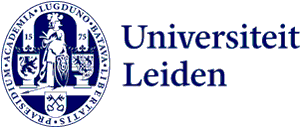Jasper's day
Jasper Knoester is the dean of the Faculty of Science. How is he doing, what exactly does he do and what does his day look like? In each newsletter, Jasper gives an insight into his life.

Tuesday 28 March
'It's Tuesday, so we start with the board meeting. The agenda is not very full, we mainly spend time on the annual monitor of the sector plans for mathematics, computer science, physics and chemistry, which has been drawn up in cooperation with the institutes. Collecting all the data is a time-consuming job that keeps many people busy. It is nice that it is all neatly on paper again for this year. By the summer, we will meet the national monitoring committee, the van Duijn Committee, to discuss progress based on this document. The reports require a lot of work, but of course we are very happy with the funds we get each year from these sector plans. Furthermore, the monitoring sessions are always a good mirror; in my experience, you always learn something from them that we can use to make the faculty a little better and stronger.
Around lunchtime, we head to the Van Steenis Building as a board, where we have the spring board meeting with the CML. We are in the middle of the administrative meetings, in which we visit all the institutes, the Hortus and the Lorentz Centre in a couple of weeks. Lunch is delicious and I enjoy a nice sandwich with humus. We have an excellent meeting with the management team of the CML. It is an open conversation about how the institute is doing, the opportunities and challenges we see and we look how we can help each other in the best possible way.
In the afternoon, I discuss some human resources issues, go through the agenda for the coming weeks with Carey (Jasper's management assistant, ed.), and we hold a preliminary meeting with the board for the next week's administrative meetings. Towards the evening, I travel to Amsterdam with Aske Plaat, LIACS scientific director. We will attend the inauguration of the new members of The Young Academy (DJA), the part of the KNAW in which younger staff members sit.
Max van Duijn, associate professor in LIACS, was chosen to be a member of the DJA this year. Very honourable. Max has a background in linguistics and researches the ability to empathise with others and imagine the world from their perspective. In doing so, he uses a combination of techniques from different fields of science, including artificial intelligence. His research is very interdisciplinary and I can imagine that he will be able to contribute well to the DJA and will enjoy it.
It is a dazzling show, in which all new members are briefly highlighted in a video and then interviewed. Ten new members are elected each year from all areas of science. You are a member for five years, after which the entire cohort retires. You are expected to make substantial contributions to (the vision of) science and to doing science, also outside your own field. I have already heard from several DJA members how inspiring this experience is, and that is completely confirmed tonight.
After the formal inauguration by KNAW president Marileen Dogterom, a lively reception followed, during which I congratulated Max and the other new members and enjoyed mingling with the audience. A nice mix of old acquaintances and new faces. Overall, it is a very successful evening. On the train back, I prepare for tomorrow. That also promises to be another fun and varied day, including the Bètabanenmarkt. Beautiful position, being dean.'
